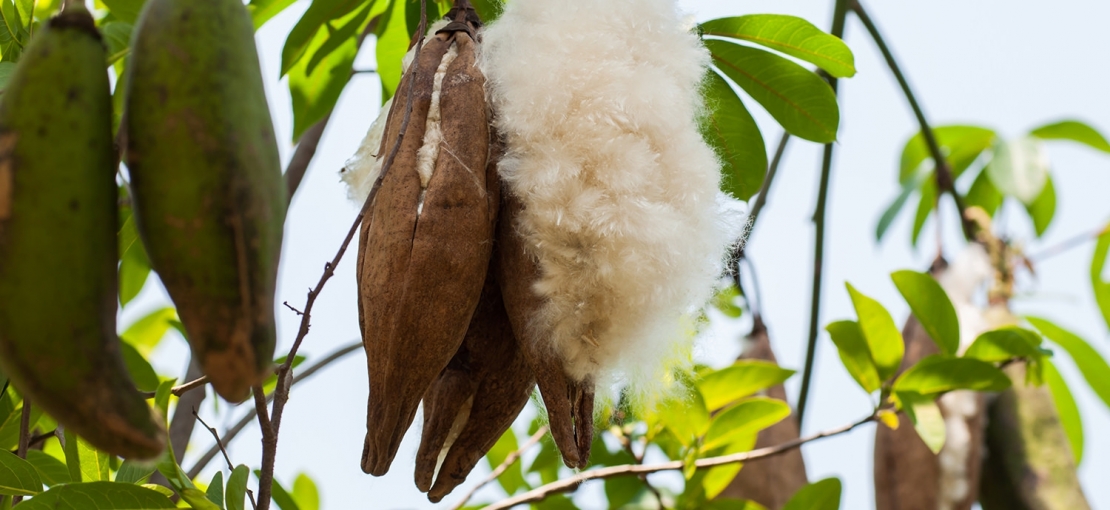
Kapok
The large fruits of the kapok tree contain fluffy, light and silky fibers that look like cotton wool. Kapok usually grows wild in tropical regions, such as Indonesia, Sri Lanka or South America.
Since the fruit is closed until it ripens, there are no natural enemies / pests for the kapok fibers so no pesticides are necessary for cultivation.
The tree has adapted optimally to tropical conditions over centuries and naturally needs neither fertilizer nor irrigation.
A kapok tree produces about 20 kilograms of fiber per year in its fruits. The fiber is collected by the local population and sold to intermediaries who prepare it for the textile industry. By selling kapok fibers, local farmers can earn a valuable income and therefore the trees are well protected.
Natural thermal insulation
In cooperation with our partner Primaloft, we have developed a new insulation, PrimaLoft® Silver Insulation Natural Blend. This insulation material consists of 30 % Kapok natural fibers and 70 % ultrafine polyester fibers, two thirds of which are made from recycled PET bottles. Our newly developed insulation keeps you warm, dries quickly, is easy-care, durable and conserves the planet’s valuable resources.
Kapok fibers have a very low density, which means that they can trap a lot of air for excellent heat storage. This fiber is considered to be one of the lightest natural fibers ever and has long been used as a fill material for pillows and cushions. It’s perfectly suited as insulation material.
Kapok fibers have a very low fiber strength and are therefore difficult to spin. Kapok cannot be spun on its own, but is only used in combination with other fibers such as cotton or recycled polyester.
This process uses melt bonding fibers that cannot be made from 100 % recycled polyester. We combine these kapok and synthetic fibers because the two materials complement each other very well. Kapok ensures good breathability as well as good insulation due to its hollow core. The synthetic fibers make the end product easy to wash, easy to maintain and fast-drying.
| GRI: | 301-1 |




